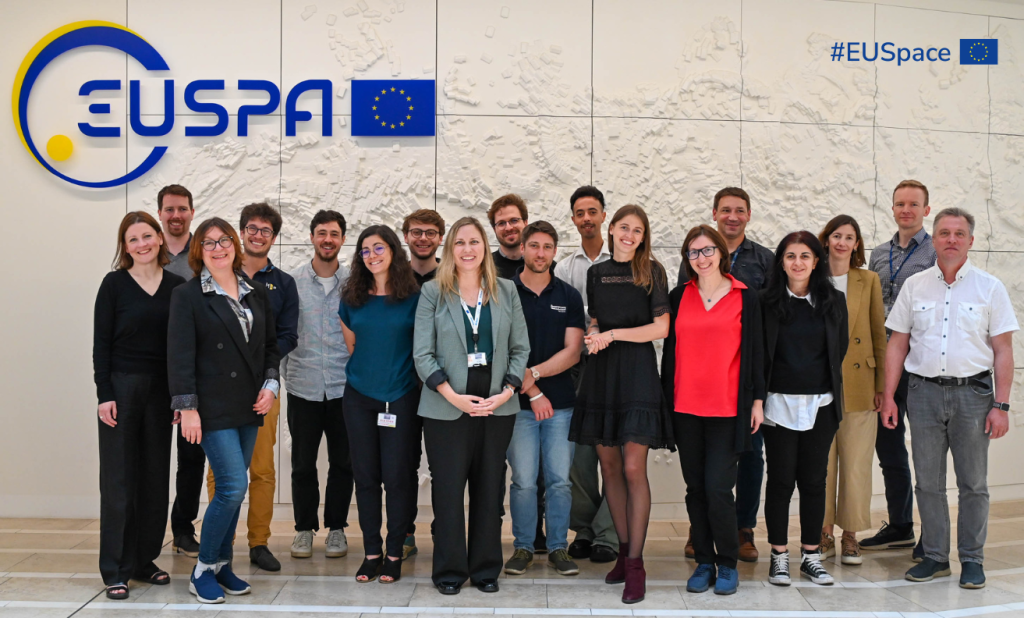SWIFTT: A Copernicus-Based tool for proactive forest management in the EU

Forests cover a third of Earth’s land, hosting 80% of its biodiversity and supporting 25% of the global population. They play a crucial role in hydrological regulation, erosion prevention, and carbon storage, essential in combating climate change. In the EU, forests cover 40% of the land and absorb nearly 10% of total greenhouse gas emissions annually. The EU's Forest Strategy for 2030 includes planting 3 billion additional trees, but emphasizes that broader conservation actions, such as preserving existing forests and addressing health threats, are necessary to effectively combat climate change and biodiversity loss.
Insect outbreaks, wildfires and windthrow are responsible for most of the biomass loss in European forests. These threats are intensified by climate change: the ever more frequent extreme weather events - like droughts, heatwaves, and storms - make trees even more vulnerable to insects and pathogens, damage and uprooting by strong winds, and to becoming dry fuel for wildfires which spread faster and burn for longer.
"The goal of the SWIFTT project is to help foresters better manage their projects through affordable, simple, and effective remote sensing tools. Backed up by Copernicus’s satellite imagery and cutting-edge artificial intelligence methods, our solution provides next-generation risk modelling to ensure the longevity of this precious environmental resource in the face of climate change", says Ariane Kaploun, Head of Nature-based Solutions at AXA Climate and Horizon Europe SWIFTT’s project coordinator.
Satellite Imagery and Artificial Intelligence
The European Union’s Earth observation programme Copernicus monitors our planet and its environment, providing vast amounts of data that are freely accessible to anyone. It supports applications in non-space domains, allowing service providers, public authorities, and international organisations to improve the quality of life for citizens in Europe and around the world.
In the forestry industry, for example, Copernicus’s Sentinel-1 satellite plays an important role in sustainable forest management with clear- and partial-cut detection, forest type classification, biomass estimation, and disturbance detection. Similarly, data from Sentinel-2 can be used to distinguish between different crop types and monitor plant growth as well as track changes to forests, including deforestation and reforestation rates, and areas affected by wildfires.
"With Earth Observation data coming from Copernicus satellites, the SWIFTT project can contribute to the EU Forest Strategy aim of strengthening the protection, restoration, and resilience of Europe’s forests", highlights Chiara Solimini, SWIFTT’s project officer at the European Union Agency for the Space Programme (EUSPA).
By combining this satellite data and machine learning models, SWIFTT will help foresters (i) identify changes in tree health, map dieback in their forests, and coordinate sanitary cuts faster, (ii) map windthrow damage after a storm for post-storm forest management, and (iii) identify areas at high risk of wildfires. All this will allow foresters to deal with these threats proactively and efficiently allocate resources for insect outbreaks and wildfire fire prevention.
Early Achievements
As the SWIFTT project reaches its halfway mark, its platform is under development by the technology partners. It will provide mapping notifications of areas in their forests at risk of windthrow damage, insect outbreaks and wildfire. Meanwhile, the research partners are working in the analysis of satellite imagery and the creation and improvement of the AI models that will make it possible for SWIFTT to identify those threats.
However, the quality of those models is largely dependent on the training data used as input. As such, SWIFTT’s end-user partners are equipped with tools working with the in-house app and global navigation satellite systems (GNSS), including the EU’s Galileo system operated by EUSPA, to collect precise, time-stamped and geo-referenced forest data sets in Belgium, France, Germany, and Latvia.
"SWIFTT is leveraging synergies among the different space components Copernicus and Galileo to address forest health threats providing an easy-to-use application to forest managers and stakeholders", says Quentin d'Huart, CEO at project partner Timbtrack.
With SWIFTT’s sustainable, effective, and low-cost forest management tool, Europe will be better positioned to combat climate change and preserve our biodiversity through healthier forests.
EUSPA will continue to support projects such as the SWIFTT one, recognizing this market segment as essential to achieving the objectives of the EU Green Deal. The EUSPA Market Report, for instance, highlights the importance of Earth Observation (EO) and Global Navigation Satellite Systems (GNSS) in forestry. A dedicated chapter discusses recent developments, future trends, and key stakeholders, emphasizing that EO and GNSS are crucial for efficient forestry operations and environmental monitoring. This synergy enables proactive and efficient forest management, boosting Europe’s ability to combat climate change and preserve biodiversity.
Media note: This feature can be republished without charge provided the European Union Agency for the Space Programme (EUSPA) is acknowledged as the source at the top or the bottom of the story. You must request permission before you use any of the photographs on the site. If you republish, we would be grateful if you could link back to the EUSPA website (http://www.euspa.europa.eu).